Chrysler 2007 Annual Report Download - page 63
Download and view the complete annual report
Please find page 63 of the 2007 Chrysler annual report below. You can navigate through the pages in the report by either clicking on the pages listed below, or by using the keyword search tool below to find specific information within the annual report.-
 1
1 -
 2
2 -
 3
3 -
 4
4 -
 5
5 -
 6
6 -
 7
7 -
 8
8 -
 9
9 -
 10
10 -
 11
11 -
 12
12 -
 13
13 -
 14
14 -
 15
15 -
 16
16 -
 17
17 -
 18
18 -
 19
19 -
 20
20 -
 21
21 -
 22
22 -
 23
23 -
 24
24 -
 25
25 -
 26
26 -
 27
27 -
 28
28 -
 29
29 -
 30
30 -
 31
31 -
 32
32 -
 33
33 -
 34
34 -
 35
35 -
 36
36 -
 37
37 -
 38
38 -
 39
39 -
 40
40 -
 41
41 -
 42
42 -
 43
43 -
 44
44 -
 45
45 -
 46
46 -
 47
47 -
 48
48 -
 49
49 -
 50
50 -
 51
51 -
 52
52 -
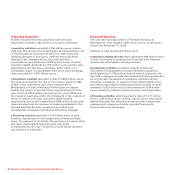 53
53 -
 54
54 -
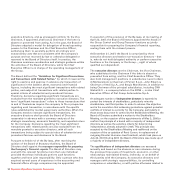 55
55 -
 56
56 -
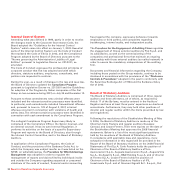 57
57 -
 58
58 -
 59
59 -
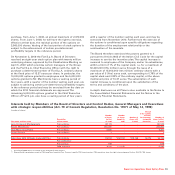 60
60 -
 61
61 -
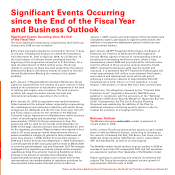 62
62 -
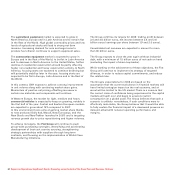 63
63 -
 64
64 -
 65
65 -
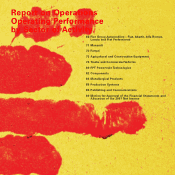 66
66 -
 67
67 -
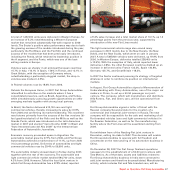 68
68 -
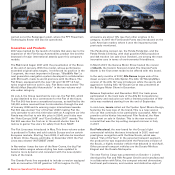 69
69 -
 70
70 -
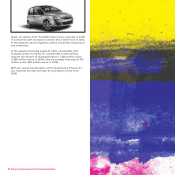 71
71 -
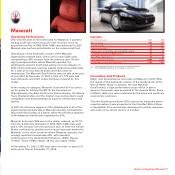 72
72 -
 73
73 -
 74
74 -
 75
75 -
 76
76 -
 77
77 -
 78
78 -
 79
79 -
 80
80 -
 81
81 -
 82
82 -
 83
83 -
 84
84 -
 85
85 -
 86
86 -
 87
87 -
 88
88 -
 89
89 -
 90
90 -
 91
91 -
 92
92 -
 93
93 -
 94
94 -
 95
95 -
 96
96 -
 97
97 -
 98
98 -
 99
99 -
 100
100 -
 101
101 -
 102
102 -
 103
103 -
 104
104 -
 105
105 -
 106
106 -
 107
107 -
 108
108 -
 109
109 -
 110
110 -
 111
111 -
 112
112 -
 113
113 -
 114
114 -
 115
115 -
 116
116 -
 117
117 -
 118
118 -
 119
119 -
 120
120 -
 121
121 -
 122
122 -
 123
123 -
 124
124 -
 125
125 -
 126
126 -
 127
127 -
 128
128 -
 129
129 -
 130
130 -
 131
131 -
 132
132 -
 133
133 -
 134
134 -
 135
135 -
 136
136 -
 137
137 -
 138
138 -
 139
139 -
 140
140 -
 141
141 -
 142
142 -
 143
143 -
 144
144 -
 145
145 -
 146
146 -
 147
147 -
 148
148 -
 149
149 -
 150
150 -
 151
151 -
 152
152 -
 153
153 -
 154
154 -
 155
155 -
 156
156 -
 157
157 -
 158
158 -
 159
159 -
 160
160 -
 161
161 -
 162
162 -
 163
163 -
 164
164 -
 165
165 -
 166
166 -
 167
167 -
 168
168 -
 169
169 -
 170
170 -
 171
171 -
 172
172 -
 173
173 -
 174
174 -
 175
175 -
 176
176 -
 177
177 -
 178
178 -
 179
179 -
 180
180 -
 181
181 -
 182
182 -
 183
183 -
 184
184 -
 185
185 -
 186
186 -
 187
187 -
 188
188 -
 189
189 -
 190
190 -
 191
191 -
 192
192 -
 193
193 -
 194
194 -
 195
195 -
 196
196 -
 197
197 -
 198
198 -
 199
199 -
 200
200 -
 201
201 -
 202
202 -
 203
203 -
 204
204 -
 205
205 -
 206
206 -
 207
207 -
 208
208 -
 209
209 -
 210
210 -
 211
211 -
 212
212 -
 213
213 -
 214
214 -
 215
215 -
 216
216 -
 217
217 -
 218
218 -
 219
219 -
 220
220 -
 221
221 -
 222
222 -
 223
223 -
 224
224 -
 225
225 -
 226
226 -
 227
227 -
 228
228 -
 229
229 -
 230
230 -
 231
231 -
 232
232 -
 233
233 -
 234
234 -
 235
235 -
 236
236 -
 237
237 -
 238
238 -
 239
239 -
 240
240 -
 241
241 -
 242
242 -
 243
243 -
 244
244 -
 245
245 -
 246
246 -
 247
247 -
 248
248 -
 249
249 -
 250
250 -
 251
251 -
 252
252 -
 253
253 -
 254
254 -
 255
255 -
 256
256 -
 257
257 -
 258
258 -
 259
259 -
 260
260 -
 261
261 -
 262
262 -
 263
263 -
 264
264 -
 265
265 -
 266
266 -
 267
267 -
 268
268 -
 269
269 -
 270
270 -
 271
271 -
 272
272 -
 273
273 -
 274
274 -
 275
275 -
 276
276 -
 277
277 -
 278
278 -
 279
279 -
 280
280 -
 281
281 -
 282
282 -
 283
283 -
 284
284 -
 285
285 -
 286
286 -
 287
287 -
 288
288 -
 289
289 -
 290
290 -
 291
291 -
 292
292 -
 293
293 -
 294
294 -
 295
295 -
 296
296 -
 297
297 -
 298
298 -
 299
299 -
 300
300 -
 301
301 -
 302
302 -
 303
303 -
 304
304 -
 305
305 -
 306
306 -
 307
307 -
 308
308 -
 309
309 -
 310
310 -
 311
311 -
 312
312 -
 313
313 -
 314
314 -
 315
315 -
 316
316 -
 317
317 -
 318
318 -
 319
319 -
 320
320 -
 321
321 -
 322
322 -
 323
323 -
 324
324 -
 325
325 -
 326
326 -
 327
327 -
 328
328 -
 329
329 -
 330
330 -
 331
331 -
 332
332 -
 333
333 -
 334
334 -
 335
335 -
 336
336 -
 337
337 -
 338
338 -
 339
339 -
 340
340 -
 341
341
 |
 |
Report on Operations Significant Events Occurring since the End of the Fiscal Year and Business Outlook62
The agricultural equipment market is expected to grow in
North America, Europe and in Latin America and to remain flat
in the Rest of the World. High global commodity prices and low
levels of agricultural stocks will lead to strong net farm
incomes. Increasing demand for corn and sugar cane to
produce fuel ethanol continues to support equipment sales.
The construction equipment market is expected to grow in
Europe and in the Rest of the World, to be flat in Latin America
and to decrease in North America. In the United States, further
declines in residential construction should be partly offset by
higher non-residential and heavy construction activity. In North
America, housing starts are expected to continue declining but
will potentially stabilize later in the year; housing starts are
expected to be flat in Europe, Latin America and in the Rest of
the World.
In this context, CNH expects to achieve a strong improvement
in unit volume along with continuing market share gains.
Momentum of positive net pricing offsetting increases in
certain raw materials and components will continue.
In Western Europe, the market for light, medium and heavy
commercial vehicles is expected to keep on growing, notably in
the first half of the year. Central and Eastern European markets
are expected to grow about 15% compared to 2007.
In this environment Iveco aims at gaining market share thanks
to new products (Daily 4x4, Massif, New Eurocargo, and the
New Stralis and New Trakker launched in 2007) and is targeting
revenue growth due to price repositioning and higher volumes.
To achieve its targets, the Fiat Group will continue to push
group-wide purchasing synergies, intensifying and accelerating
development of best cost country sourcing, strengthening
strategic partnerships with suppliers through long term
contracts, and focusing on the implementation of World Class
Manufacturing initiatives.
The Group confirms its targets for 2008: trading profit between
3.4 and 3.6 billion euros, net income between 2.4 and 2.6
billion euros (earnings per share between 1.9 and 2.0 euros).
Consolidated net revenues are expected to amount to more
than 60 billion euros.
The Group expects to close the year again without industrial
debt, with a minimum of 1.5 billion euros of net cash on hand
(excluding the impact of share buy-backs).
While working on the achievement of these objectives, the Fiat
Group will continue to implement its strategy of targeted
alliances, in order to reduce capital commitments, and reduce
the related risks.
The Group’s expectations for 2008 are based on the
assumption that the current turbulence in financial markets will
have limited contagion impact on the real economy, and at
worst will be limited to the US market. There is a concern that
the current crisis of confidence being experienced in the capital
markets will spill over and begin to severely restrict
consumption on a global scale. The Group believes that such a
scenario is unlikely: nonetheless, if such conditions were to
effectively materialize, the Group believes that it would be able
to fully sustain the financial impact of a downward pressure on
demand, albeit with reduced operating performance and
margins.
